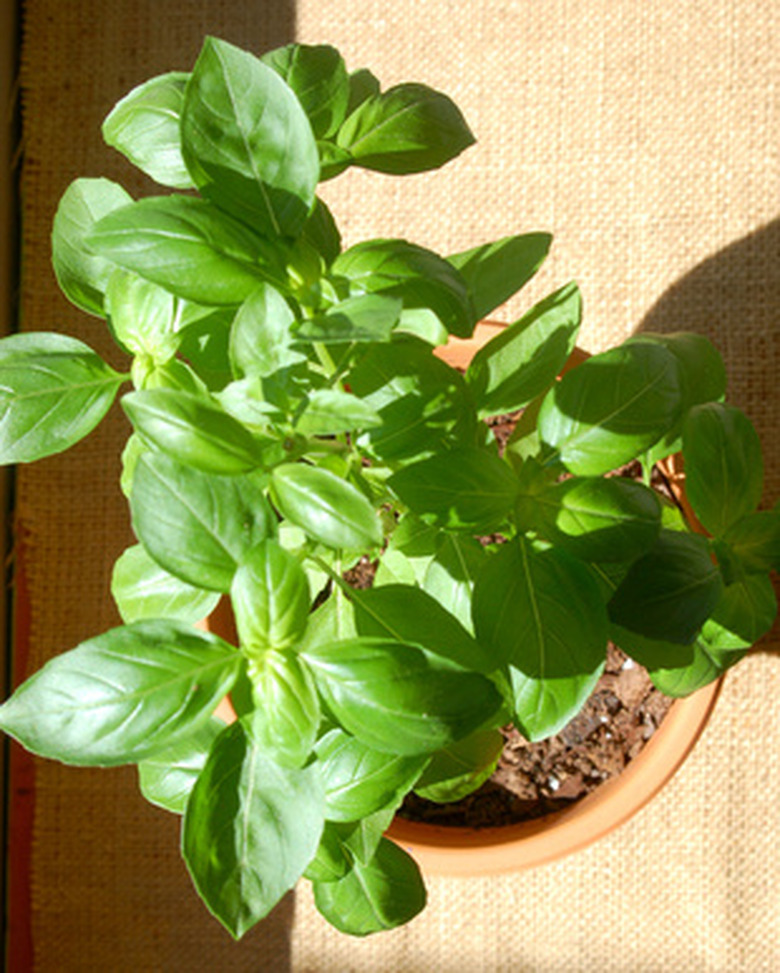How To Plant Basil In Zone 5
Things Needed
- Pot
- Compost
- Vermiculite
- Peat moss
- Basil seeds
- Plastic wrap
Basil is a prized garden herb, being versatile in the kitchen and easy to grow. As a tender annual, basil tolerates no frost or cold weather. It needs warm weather to thrive, and a too-short warm season can prematurely kill your basil crop. Gardening zone 5, which encompasses much of the northern United States, is an area with late spring frosts as well as the chance for early freezes in fall. Ensure a long growing season for your basil by planting it in pots. In zone 5 areas you can bring the pots indoors when frost threatens, protecting the herb from the weather.
Step 1
Fill a 4- to 6-inch diameter pot with a quality, sterile potting mixture. Make your own mixture by combining one part sterile compost, one part peat moss and one part vermiculite or coarse sand.
- Basil is a prized garden herb, being versatile in the kitchen and easy to grow.
- Ensure a long growing season for your basil by planting it in pots.
Step 2
Sow two to three basil seeds per pot approximately ½ inch deep. Water the soil until it is just moist immediately after sowing the seeds.
Step 3
Cover the pot with a layer of plastic wrap and place it in a warm room to germinate. Germination takes approximately seven days after sowing.
Step 4
Remove the plastic once sprouts appear. Place the basil seedlings in a warm, sunny windowsill and water as necessary to keep the soil moist.
Step 5
Thin the basil down to one plant per pot once the plants are about 3 inches tall. Pinch off the smaller, weaker seedlings at soil level, leaving the one stronger seedling in the pot.
- Sow two to three basil seeds per pot approximately ½ inch deep.
- Thin the basil down to one plant per pot once the plants are about 3 inches tall.
Step 6
Pinch off the top 2 inches of the basil plant once it is 6 inches tall. This encourages full, bushy growth.
Step 7
Set the pot outside once the weather warms and danger of frost is past. If a late-season frost is predicted, bring the pot indoors until frost danger is past.
Tip
If you must plant basil in a garden bed, choose a bed in full sun, plant outside after frost danger is past, and cover plants if a late-season frost is predicted. Harvest basil as needed throughout the growing season. Cut off leaves from the plant and use them fresh or dry them for later use.
Warning
While basil doesn't require a lot of soil nutrition, it may require fertilization in pots. If the leaves begin to yellow, fertilize with a half-strength liquid plant food.
